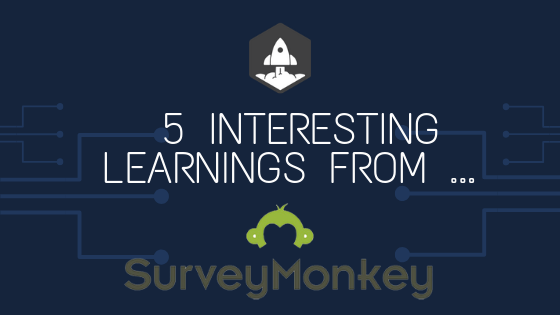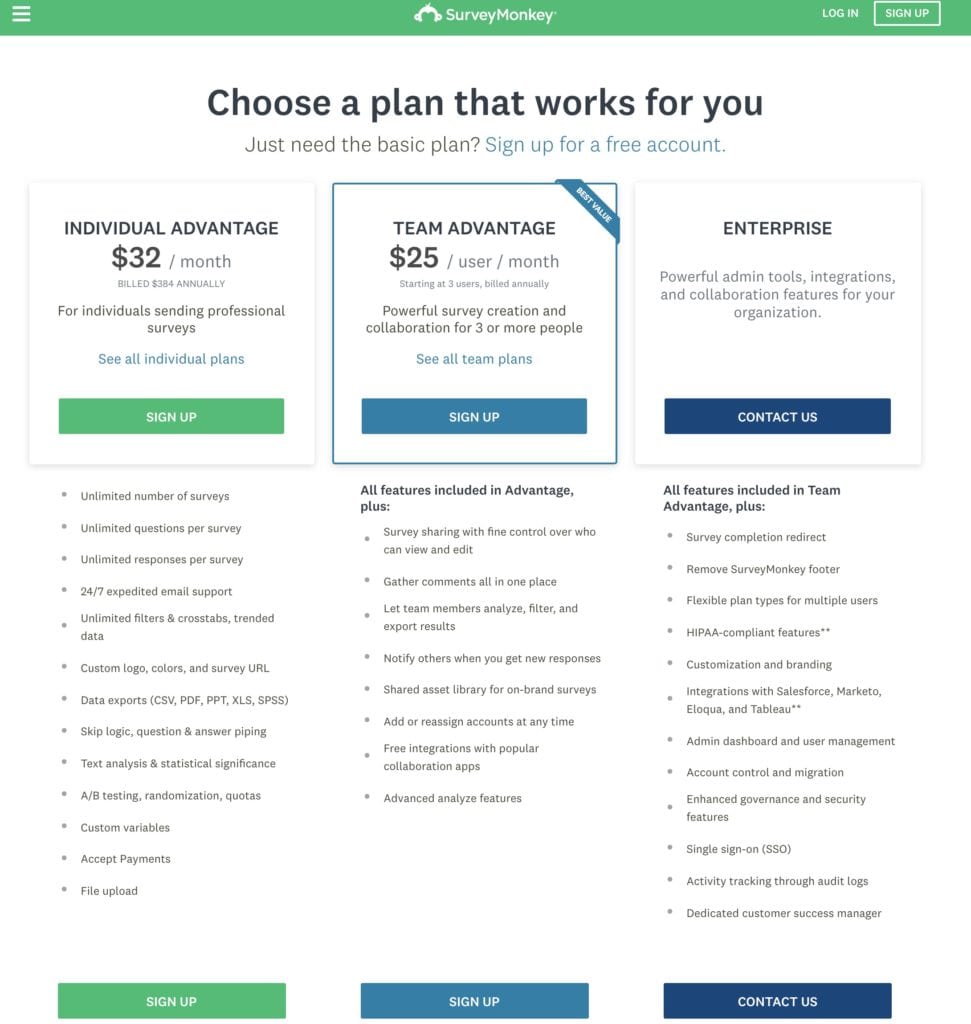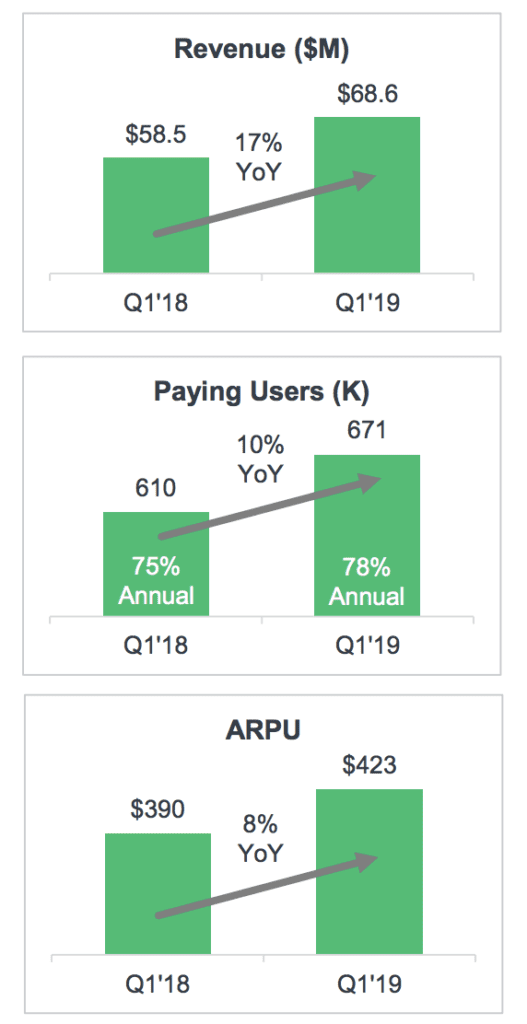
SurveyMonkey is one of the Old School SaaS companies that has followed an interesting path. Founded back in 1999 (like Salesforce) in the Web 1.0 days, for years it was run by a tiny team and dominated the self-service side of surveys. It stayed small until 2009 when the founders were bought out by a private equity firm. Now it is 20 years young!
20 years ago 🌟today 🌟, our founder Ryan Finley registered the https://t.co/5lqGdN8Ukl domain. Pretty incredible that 6B people have taken surveys on our platform. More fun stats here: https://t.co/RuKw56eHJy
— Leela Srinivasan (@leelasrin) November 6, 2019
Its growth has been more slow-and-steady than traditional rocketship, crossing $69m in Q4 revenues (let’s call that $280m+ in ARR, so soon to be $300m) — growing 17% a year by revenue, and 10% a year by customer count. So the current products are very successful, but mature. That is a similar revenue growth rate to Salesforce’s mature core CRM product. But Salesforce’s other products are growing more quickly, while SurveyMonkey has mostly kept to one core product, albeit with with a recent, and successful, push into the enterprise (see below).

SurveyMonkey itself is going more enterprise and upmarket now, with 16% of its revenue now enterprise, up from 13% a year ago and close to 0% originally. That will be their secret to future growth.
A few learnings:
1. Price Increases Do Work at Scale. SurveyMonkey increased prices, which resulted in a big chunk of growth. ARPU grew 8%, from $390 to $423. At 16% growth, about half of that growth came from pricing increases. With 670,000+ (!) self-service customers, at some point, you can potentially have the entire world as customers and mature out in SMB. But the benefit to price increases is somewhat ephemeral in SaaS … unless you can raise prices every year. As SurveyMonkey notes, “the benefits of the price increase set up a more difficult comparison from a year-over-year growth perspective”, with only 10% paid user growth overall.
2. Eventually, most of us go upmarket. One worry with SMB and freemium is how big can the market be? Even if you close every customer on Earth, if the price point is too low, how big can you be? This leads most, but not all, of us to go upmarket. Slack has gone upmarket (more on that here). DropBox finally started to after $1b in ARR. Similarly, SurveryMonkey is finally leaning in here, with enterprise revenue up to 16% of total revenue, from 13% the year before. Enterprise customers grew 37% YoY, with 3,900 of them — vs. 670,000 self-service customers.
3. 78% Annual payments, 22% Self-Service payments. As we saw with Zoom, don’t force it. Let customers pick. They are driving this up to 90% as they go more enterprise.
4. Adding a Team offering added bigger deals, and is often the simplest way to start to go upmarket. Customers will tend to buy more seats if you add a Team offering. It worked for me. It worked for SurveyMonkey. They now moved in fact to making Teams a default way to purchase the product.
5. 100% Dollar-Based Retention for organizations. This is strong for SMBs, but at the low end of public SaaS companies overall. Without 110%-140% revenue retention, it’s just harder for SurveyMonkey to grow as quickly as Zoom, Slack, PagerDuty, etc. which have 120%-140% retention. SMBs churn at a higher rate, so even 100% is pretty impressive. But at scale, it makes it harder to grow if retention isn’t 110%+. And their enterprise customers have 4x account growth over time from the initial deal size.
A few other learnings:
6. They needed to add a European data center to scale enterprise in Europe. We probably all do, now.


